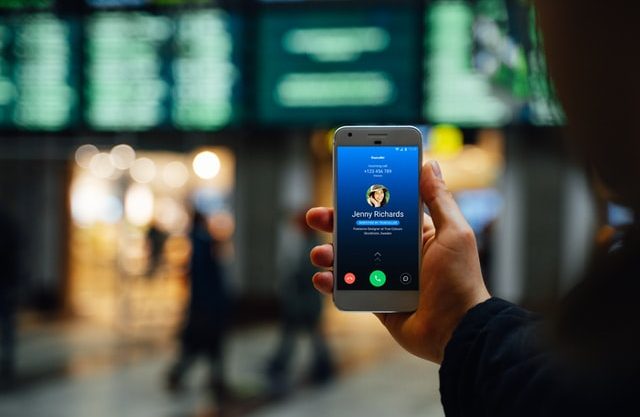Nowadays, we literally have all the things we need at our fingertips. Book a flight, and you got apps. Rent a house, and you got apps. Rent a cab, and you got apps. Buy a phone, and you got apps.
But once you have that phone (and after coupling it with a working sim), you get a ton of spam calls, wrong dials, calls from companies trying to sell you something, so on and so forth. I think we can all agree that these uninvited rings can be draining. But we have another utilitarian app to deal with all this.
If your guess was Truecaller, you are right on the money. You can now identify callers, block them, and decide which ones to answer. So, let us talk about how Truecaller came to be, how it earns money, and what is Truecaller’s business model.
Beginning of the journey
Around 2008, Alan Mamedi and Nami Zarringhalam sold their second startup in Stockholm, Sweden. The product was named Jobbigt.se, which was a platform where employees can review their employers. Both the founders were immigrants in Sweden, and one of the founders, Alan, was working in a startup where he described the founders as ‘Very racist.’
Hence the platform arose out of their personal need for an outlet to voice their concerns and give a platform to employees facing similar issues.
They used the money they got from selling Jobbigt.se to buy smartphones and servers. And that is when they started facing the same issue as all mortals do (at least the ones owning a phone do). Truecaller was born because the founders were getting incessant spam calls on their phones. And not to mention, the product was a hit. In the first week itself, it crossed 1,00,000 downloads. Remember, this was a time without an app store where any installation had to be done via CAD files. In that light, this number was big.
The response made the founders realize that they might be building a solution for a global problem, and thus, they decided to focus on Truecaller, where the potential lied solely. The first 2-3 minutes of this video should give you an idea of how Truecaller came to be in Alan Mamedi’s own words.
How Truecaller functions
The answer to this question is straightforward. If you use Truecaller, you know that it asks you to sign up using Facebook, Yahoo, or Google accounts. These social media platforms already have a fair picture of you and your community in the digital space. When you sign up using these, you give access to this community to Truecaller.
Similarly, Truecaller asks for access to your contact list at the time of sign up. And then there are national directories. So, Truecaller picks up all this data, runs it through its refining algorithms, and the result is a clean list of numbers associated with an identity. This list is made available for search on the Truecaller platform, where any registered user can get details of a contact.
Business model of Truecaller: How Truecaller makes money
But how does Truecaller make money, or what is its business model? The app uses the data thus collected in tons. To underline, there are 5 primary ways in which Truecaller makes money:
- Premium Services: Like many apps, Truecaller works on a freemium model. That is, if you like what you use in the free mode, you can get a better suite of services with Truecaller premium and Truecaller gold.

- Advertisement: The biggest revenue stream for any organization handling such a large amount of data is advertisements. The more views an application can assure any advertiser, the more it can charge them, and Truecaller has many views to offer.
- Data sharing: This can be termed as a precursor to effective advertising. If any advertiser wants to target a specific segment of customers, they can simply ask for that data from Truecaller. This can better enable them to target their ads and endorse their products. Sounds invasive, right? But we agree to this when we accept the Truecaller privacy policy. So, there you have it.
By accepting the Truecaller Privacy Policy and/or using the Services You consent to the collection, use, sharing, and processing of personal information as described herein. If You provide us with personal information about someone else, You confirm that they are aware that You have provided their information and that they consent to our use of their information according to our Privacy Policy. You may opt-out at any time to prevent further use of the information shared via the Services.
Truecaller Privacy Policy
- B2B services: With Truecaller for business, Truecaller provides its business clients with a ‘Verified business’ tag or a ‘Priority call’ tag to better enable their chances to reach customers. Imagine if Swiggy called you to collect your order, and you cut the call because it appeared as Spam. This service helps avoid that. It also provides an API that businesses can rent to map a name to the numbers available with them.

- One-time loan processing fee: Latest in their portfolio of services, Truecaller offers instant loans based on credit scores for which they charge a one-time processing fee.
Whats next in Business Model of Truecaller
If you cringed on the data sharing point above, you would be glad to some point to know that you can delist your number from Truecaller’s search directory. I mean, it may take up to 24 hours, but your number will disappear from the search directory after that.

Another move by the company to help in the pandemic is the directory of COVID-related numbers available on the app, along with a map that outlines vaccination centers, testing locations, hospitals, etc. This is probably the best way the company can leverage its massive reach in this time of need.
In December 2019, Truecaller announced its plans to go public in an IPO in 2022. Truecaller has Openocean, Sequoia capital, Atomico investments, and Kleiner Perkins Caufield & Byers as their investors. Given the current situation, the IPO plans may stretch out to a bit longer than expected. But I wonder how well it will go.
Conclusion
Imagine the plight of our ancestors, picking up the phone without knowing who is on the other side of it, only to get frustrated by someone selling you a credit card. I do not think any of us does that now because Truecaller has become a basic app on everybody’s smartphones nowadays. So far as the business model of Truecaller is concerned, it provides useful facilities even in the free version of the product, which only gets better when paid for.
Though there have been some security concerns over the infrastructure and handling of data by Truecaller, they have always responded swiftly in these scenarios. And overall, I would say that Truecaller has largely made our lives easier. What do you think?
Update: Truecaller, which earns the majority of its revenues from India, made its trading debut at $6.82 (60 Swedish Krona) per share on Nasdaq Stockholm, up 15.4 percent from the company’s listing price, giving the company a market cap of around $2.5 billion.
Earlier on October 8, 2021, Truecaller priced its public offering at $5.91 (52 Swedish Krona), corresponding to a market cap of $2.2 billion (19,431 Swedish Krona). The firm was looking to mop up around $428.2 million (3,770 million Swedish Krona) through the offering, assuming the over-allotment option is exercised in full. Of this, the primary capital being raised is $114 million (1,000 Swedish Krona).
-AMAZONPOLLY-ONLYWORDS-START-
Also, check out our most loved stories below

Why did Michelin, a tire company, decide to rate restaurants?
Is ‘Michelin Star’ by the same Michelin that sells tires, yes, it is! But Why? How a tire company evaluations became most coveted in the culinary industry?

Johnnie Walker – The legend that keeps walking!
Johnnie Walker is a 200 years old brand but it is still going strong with its marketing strategies and bold attitude to challenge the conventional norms.

Starbucks prices products on value not cost. Why?
In value-based pricing, products are price based on the perceived value instead of cost. Starbucks has mastered the art of value-based pricing. How?

Nike doesn’t sell shoes. It sells an idea!!
Nike has built one of the most powerful brands in the world through its benefit based marketing strategy. What is this strategy and how Nike has used it?

Domino’s is not a pizza delivery company. What is it then?
How one step towards digital transformation completely changed the brand perception of Domino’s from a pizza delivery company to a technology company?

BlackRock, the story of the world’s largest shadow bank
BlackRock has $7.9 trillion worth of Asset Under Management which is equal to 91 sovereign wealth funds managed. What made it unknown but a massive banker?

Why does Tesla’s Zero Dollar Budget Marketing Strategy work?
Touted as the most valuable car company in the world, Tesla firmly sticks to its zero dollar marketing. Then what is Tesla’s marketing strategy?

The Nokia Saga – Rise, Fall and Return
Nokia is a perfect case study of a business that once invincible but failed to maintain leadership as it did not innovate as fast as its competitors did!

Yahoo! The story of strategic mistakes
Yahoo’s story or case study is full of strategic mistakes. From wrong to missed acquisitions, wrong CEOs, the list is endless. No matter how great the product was!!

Apple – A Unique Take on Social Media Strategy
Apple’s social media strategy is extremely unusual. In this piece, we connect Apple’s unique and successful take on social media to its core values.
-AMAZONPOLLY-ONLYWORDS-END-
















